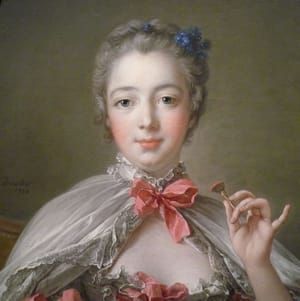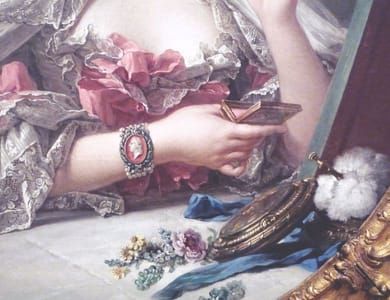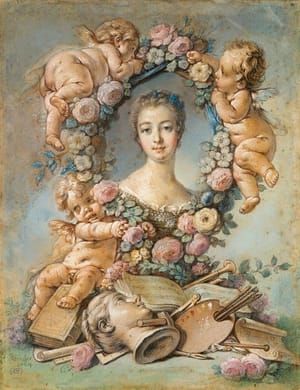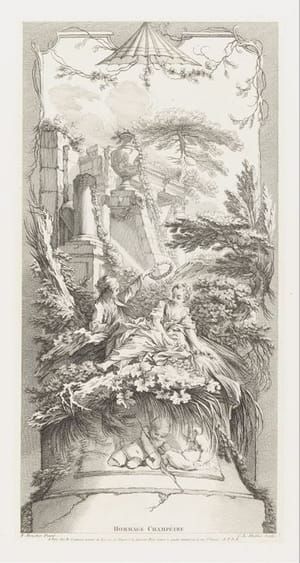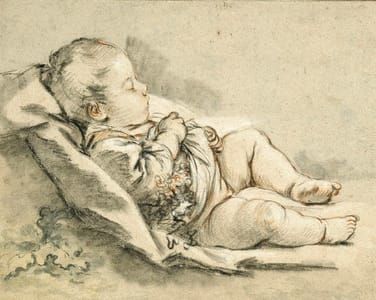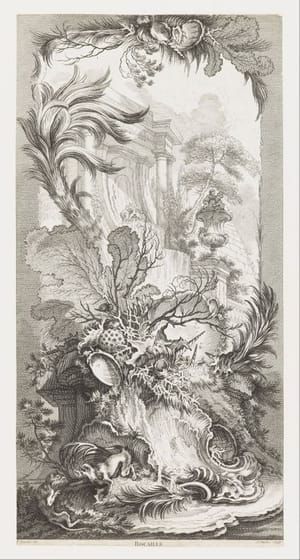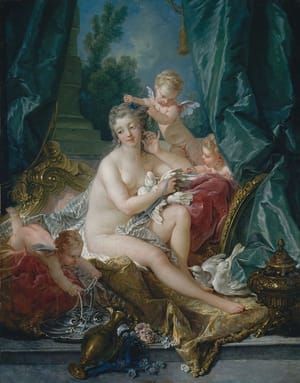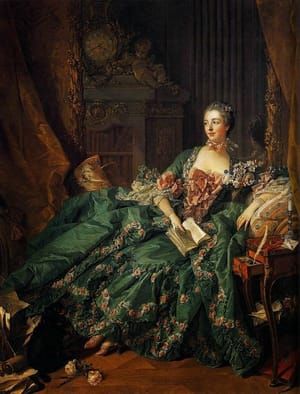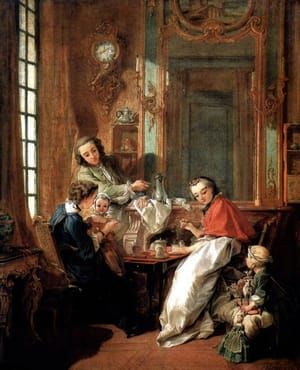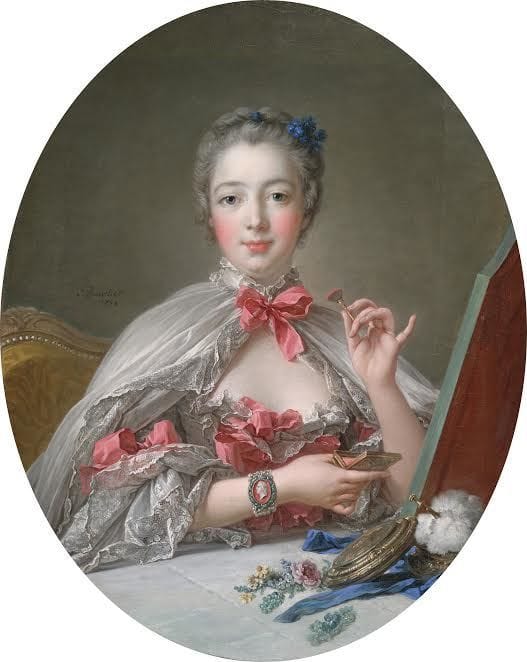

Jeanne Antoinette Poisson, Marquise de Pompadour, 1750
François Boucher
Painted in 1750 with later additions; see below.
Boucher is known for his idyllic and voluptuous paintings on classical themes, decorative allegories, and pastoral scenes. He was perhaps the most celebrated painter and decorative artist of the 18th century. He also painted several portraits of his patroness, Madame de Pompadour.
(https://en.wikipedia.org/wiki/François_Boucher)
This likeness of the marquise de Pompadour (1721–1764) was originally painted as a rectangular bust-length portrait for her brother, Abel-François Poisson, marquis de Marigny. After being damaged in transit, the portrait was extended on all sides, most likely by Boucher himself, and transformed to portray the marquise at her dressing table. The depiction of the mirror was changed from silver to green lacquer around 1759, when many courtiers surrendered their precious metals to support the war against Britain. About a decade later, the canvas may have been reshaped into an oval to suit contemporary taste.
Pompadour was the official mistress of Louis XV beginning in 1745. The king’s portrait on her wrist decorously signifies that bond. The signature and date of 1758 found above the chair are much later additions.
(http://www.harvardartmuseums.org/art/303561)
Americans have long been enchanted with 18th century France and its aristocracy, fashion, philosophy and new ways of thinking. They collected French art in pursuit of these ideals, and also for the elegance and wealth these works symbolize. For example, many paintings display opulent wardrobes of the period — lavish furs, shimmery silks, and delicate lace — and help to convey the wealth and sophistication of the collector.
You’ll get a sense of this opulence as you’re greeted at the exhibit entrance by the striking portrait of Jeanne Antoinette Poisson, better known as Madame de Pompadour. At her makeup table, she is applying a bright pink rouge that matches the bows of her elegant, luminous dress. In fact, the Marquise loved this certain pink so much that the color was later called rose Pompadour. A vision of beauty and composure, 18th century style.
Madame de Pompadour proved to be much more than a pretty mistress to Louis XV; she was one of the most celebrated art collectors of the time. A true tastemaker, her artistic choices helped influence the art scene in France and beyond.
She first started collecting art in the 1740s to decorate the estates given to her by the king. For example, the two paintings adjacent to her portrait here are The Bath of Venus and The Toilet of Venus. Painted by her favorite artist, François Boucher, they were hung in her private rooms. Over the years, these pieces — and her aesthetic influence — crossed borders to new owners. The Toilet of Venus was eventually procured by the Vanderbilts and The Bath of Venus went to the Rothschild family.
(https://www.francetoday.com/culture/museums-galleries/18th-century-french-art-america/)
Uploaded on Jun 23, 2017 by Suzan Hamer
François Boucher
artistArthur
Wait what?

